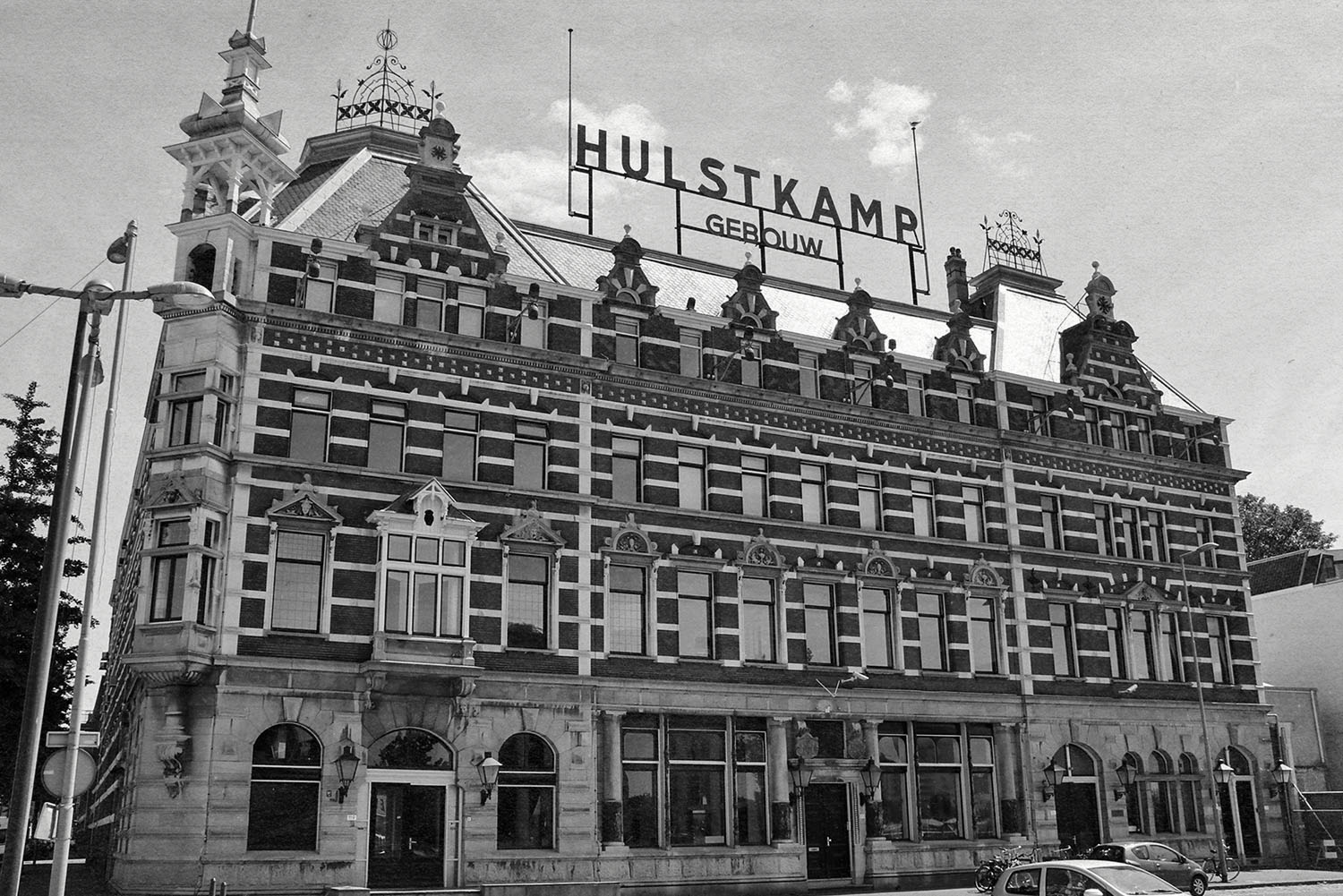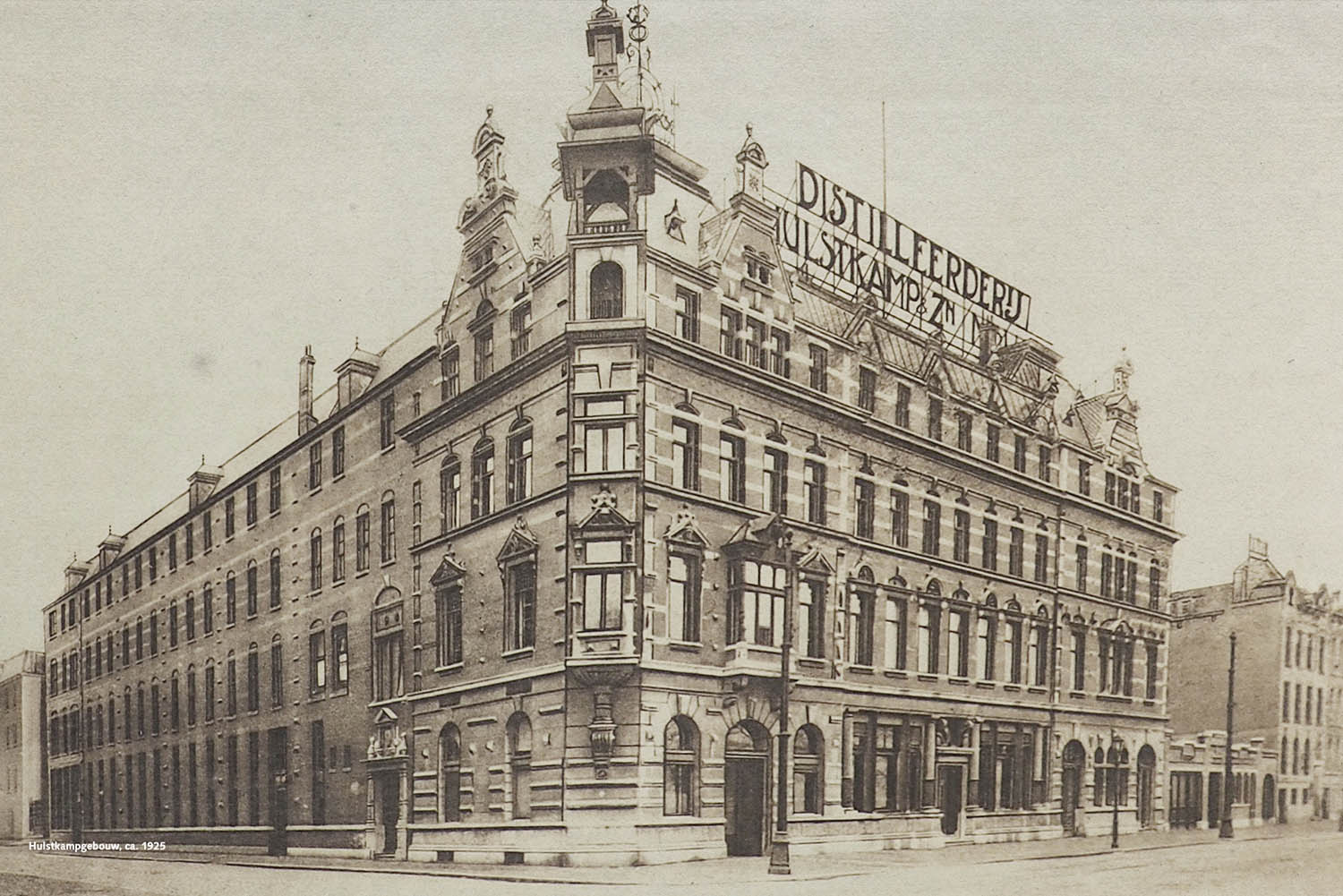HistOrical natiOnal mOnument On the banks Of the maas
The Hulstkamp Building was designed in 1888 by the Rotterdam architect Jacobus Pieter Stok in the Neo-Renaissance style. It acquired its distinctive appearance with red bricks adorned with white bands and ornaments. Since then, it has proudly stood as the focal point of the Noordereiland.


NOstalgia and HistOry
In the late 1800s, the Laming & Sons company commissioned the construction of the building, ultimately occupying it in 1892. From that point on, the building served as a margarine and cheese factory, complete with offices, a residence, and storage space. Following the bankruptcy of Laming & Sons, the property became owned by the Hulstkamp & Zoon & Molijn company from 1919 to 1972. They established a gin distillery in the building, giving it the name it carries today.
As one of the few buildings in Rotterdam, the Hulstkamp Building also survived World War II. During the attack on Rotterdam in 1940, it was one of the first buildings occupied by the Germans. In 1979, the building became vacant, and from 1980 to 1995, the Marine Museum was housed in the Hulstkamp Building.
After a thorough renovation of the office building and the demolition of the distillery, the monumental structure became a business collective building, as well as an event and conference center, operated by Maison van den Boer. In 2021, this operation was taken over by Hutten.
HistOrical natiOnal mOnument On the banks Of the maas
The Hulstkamp Building was designed in 1888 by the Rotterdam architect Jacobus Pieter Stok in the Neo-Renaissance style. It acquired its distinctive appearance with red bricks adorned with white bands and ornaments. Since then, it has proudly stood as the focal point of the Noordereiland.

NOstalgia and HistOry
In the late 1800s, the Laming & Sons company commissioned the construction of the building, ultimately occupying it in 1892. From that point on, the building served as a margarine and cheese factory, complete with offices, a residence, and storage space. Following the bankruptcy of Laming & Sons, the property became owned by the Hulstkamp & Zoon & Molijn company from 1919 to 1972. They established a gin distillery in the building, giving it the name it carries today.
As one of the few buildings in Rotterdam, the Hulstkamp Building also survived World War II. During the attack on Rotterdam in 1940, it was one of the first buildings occupied by the Germans. In 1979, the building became vacant, and from 1980 to 1995, the Marine Museum was housed in the Hulstkamp Building.
After a thorough renovation of the office building and the demolition of the distillery, the monumental structure became a business collective building, as well as an event and conference center, operated by Maison van den Boer. In 2021, this operation was taken over by Hutten.
